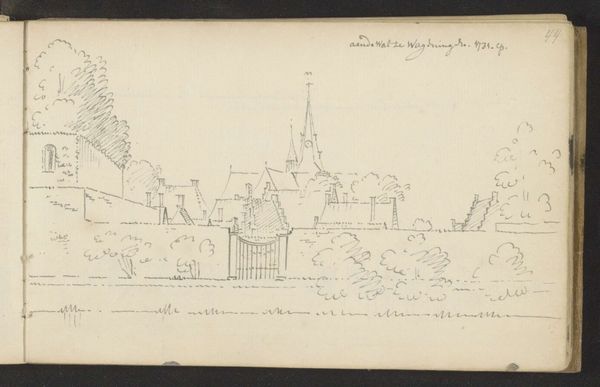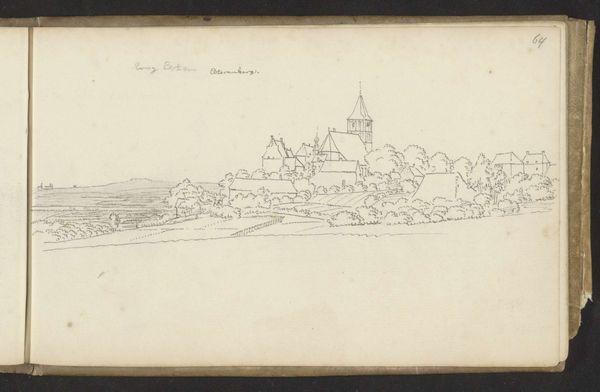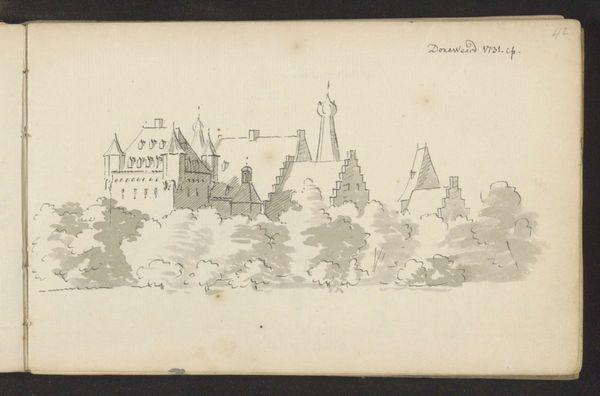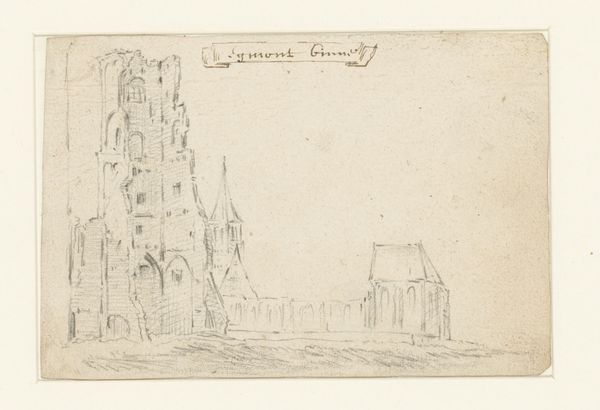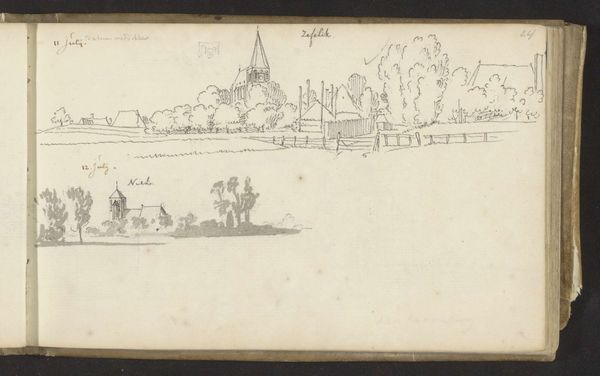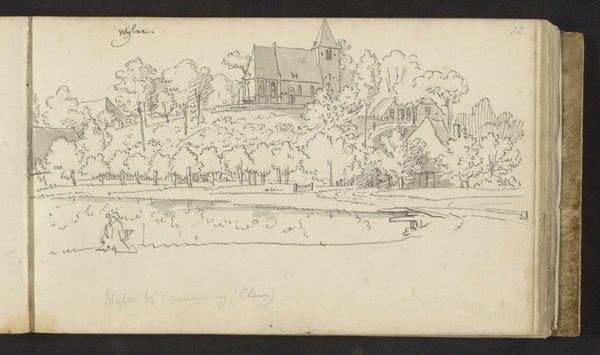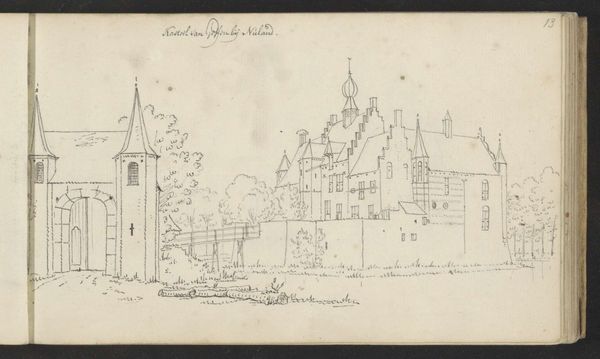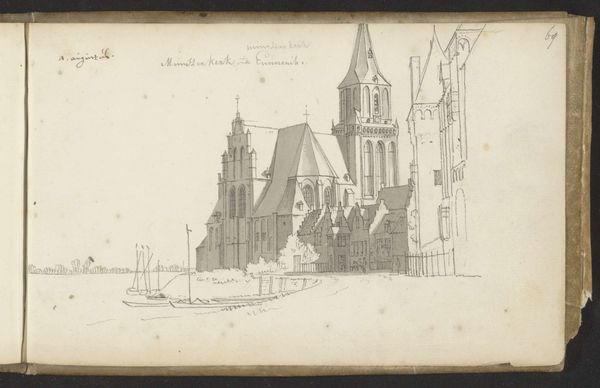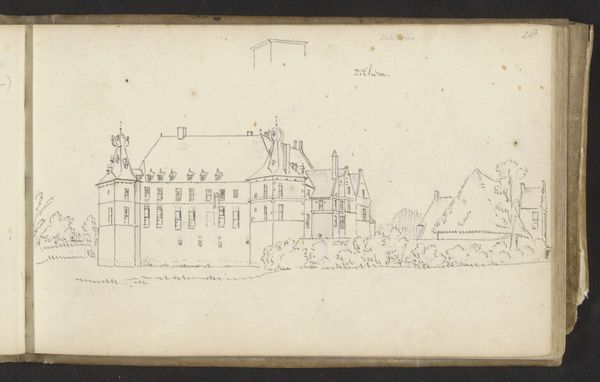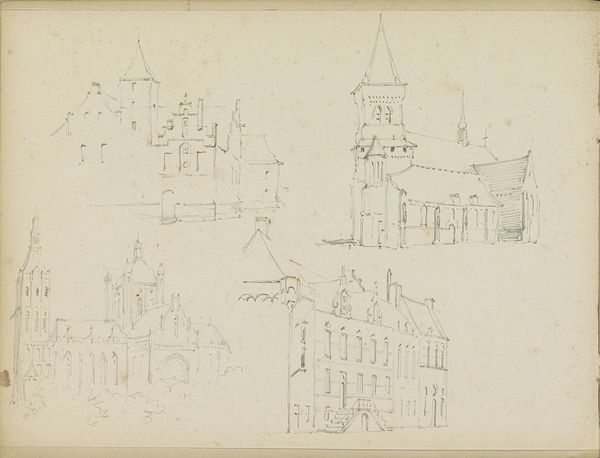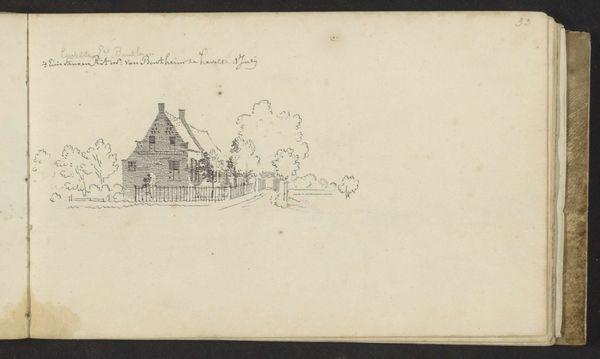
drawing, paper, ink
#
drawing
#
baroque
#
dutch-golden-age
#
landscape
#
paper
#
ink
#
pen-ink sketch
#
cityscape
Copyright: Rijks Museum: Open Domain
Curator: Here we have "Stadsgezicht met Leeuwpoort te Emmerik," a cityscape made by Abraham de Haen the Younger in 1731. It’s currently held at the Rijksmuseum. Editor: It’s delicate. The scene has been quickly captured with fine ink lines on paper. Almost like a fleeting thought. Curator: Exactly. It gives us a peek into Emmerich during the Dutch Golden Age. Given the fortifications depicted, I think this is also about power dynamics and who held sway at this time. The very act of mapping and sketching a city served as a form of claiming it. Editor: Interesting point. To me, the choice of ink as the primary medium tells a story in itself. Ink requires skill; control. We need to think about its cost relative to other available drawing materials. The materiality connects it to craft and how valued it was. Curator: Perhaps, although it is typical of landscape drawings made in the baroque tradition. It can suggest refinement, maybe? How the subject sees his subject represented with grandeur and self-assurance, right? And, I also feel it shows how this specific community felt, culturally. Editor: And did the general population think the same as their representation? And what about labor division and urban development—these are the result of material realities, after all. Who built those walls and what resources were at their disposal? Curator: Of course, considering such factors is valid, since their construction could've marginalized some people. I see these issues in the structures themselves, as permanent expressions of identity. How people navigated that cityscape defined the social life within and around the wall's parameters. Editor: So it makes sense to reflect on what the physical process behind this creation actually means—and for whom. From resource allocation to labor power, to skill as craft that might define your persona. That pen stroke carries weight. Curator: Yes, there's so much here; a tangible and material place to reconsider these sociopolitical ideas. It definitely changes my viewpoint about it, understanding those resources. Editor: Mine, too. Examining art through its social context makes for a layered, richer reading.
Comments
No comments
Be the first to comment and join the conversation on the ultimate creative platform.
